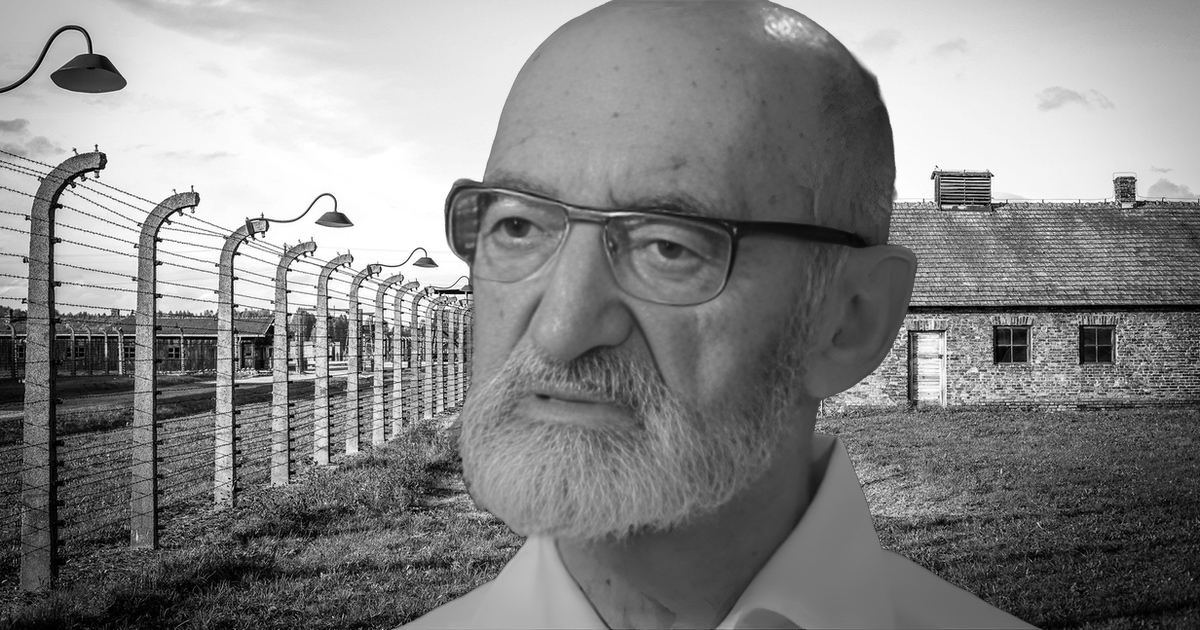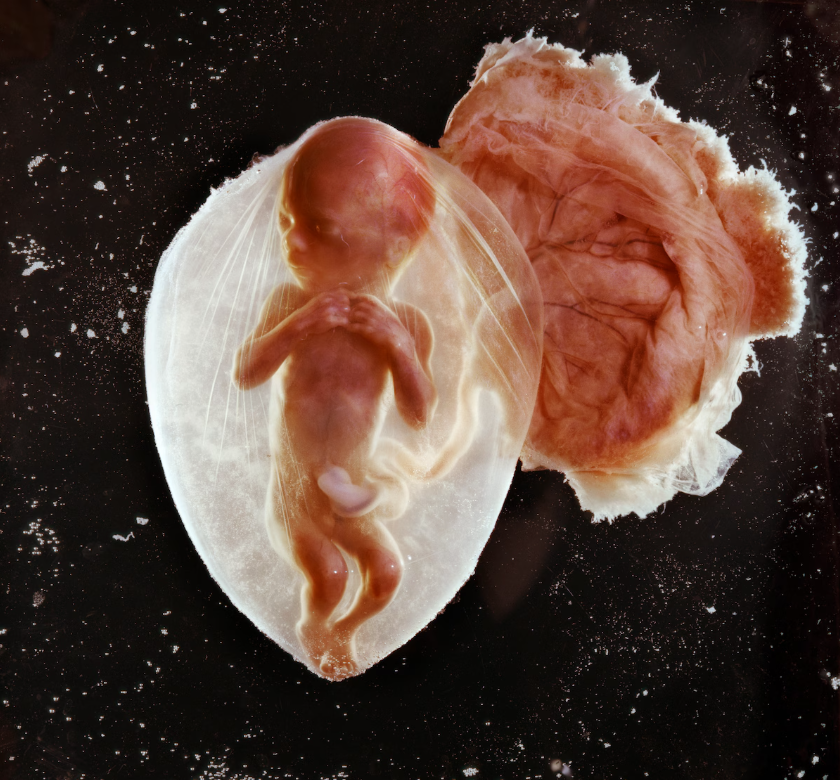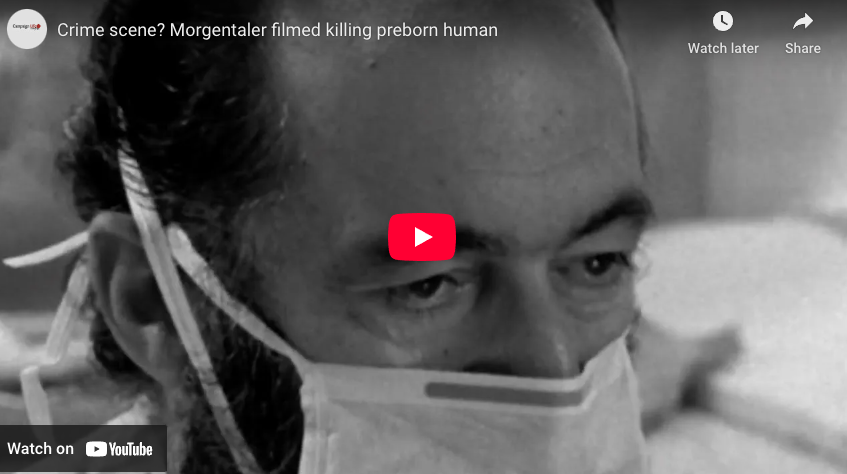Canada’s ‘Father of Abortion’ Was a Holocaust Survivor. Did Trauma Make Him a Killer?

From Auschwitz to Abortion: The Tragedy of Henry Morgentaler
It has long haunted me how Henry Morgentaler, sometimes referred to as Canada’s “father of abortion,” survived Nazi concentration camps only to go on to perpetrate similar horrors against the smallest and most vulnerable members of the human family: preborn children.
How did a Jewish Holocaust survivor from Poland—someone who endured the worst of man’s inhumanity to man at the infamous Nazi camps of Auschwitz-Birkenau and later Dachau—go on to dehumanize and destroy tens of thousands of preborn human beings, robbing them of their most fundamental right: the right to life?
Morgentaler’s biographies provide vivid accounts of his survival, though some critics question the credibility of those accounts. Eleanor Wright Pelrine, in her 1975 book Morgentaler: The Doctor Who Couldn’t Turn Away, wrote about how Nazis rounded up the 21-year-old Morgentaler from a Jewish ghetto in August 1944, herding him along with his mother and younger brother, Mumek (Mike), onto an overflowing train bound for the dreaded Auschwitz-Birkenau camp where over a million people were murdered.
It was during the “selection” process after arriving that Morgentaler saw his mother for the last time. He and his brother were selected for work, their mother for the gas chambers. Prisoners had their belongings confiscated, they were stripped naked, shaved from head to foot, and provided striped prison garb along with wooden shoes. A huge chimney nearby spewed forth black, stinking smoke, a brief testimony lingering in the sky to those who were murdered in the gas chambers and were later cremated.
Morgentaler was soon transferred to the Dachau work camp, where—in a deliberate effort to dehumanize prisoners—he was stripped of his name and identified only by a number: 95077. The camp routine consisted of 12 hours of hard labor and 5-6 hours of sleep. Food, consisting of watery soup and bread, was rationed and insufficient. Prisoners died from malnutrition, exhaustion, and exposure. There were constant beatings. Fear was everywhere. One day, Morgentaler, starving and sick, reported to the infirmary. He glanced at his reflection in the mirror. The emaciated figure he saw staring back at him filled him with horror. “I looked like death incarnated—and I started to cry. I thought it must be the end,” he recounted.
As the war neared its end, Morgentaler and his brother were transferred from camp to camp as their captors tried to prevent them from falling into Allied hands. They had numerous close brushes with death. In late April 1945, the brothers escaped from a train that came under attack by Allied aircraft. Sympathetic German peasants helped them to freedom. “I was 22, still young, had survived the concentration camp and serious disease,” recounted Morgentaler. “Everything was beautiful. Everything had evolved into a celebration of life.” Eventually, he tracked down his sweetheart Chava (Eva), completed four years of medical studies, and immigrated to Canada by way of Belgium.
Throughout his life, Morgentaler would experience nightmares of what he had endured. “I’m being pursued by high-booted Nazi soldiers, caught, and then I blank out or wake up in a sweat,” he related. He maintained a deep-seated feeling of dread about being crushed by hostile authorities, helpless to do anything about it, like “an insignificant little worm, and there is not much I can do except wiggle out of some situation.”
*
Morgentaler’s history of abortion activism is well-known to those involved in Canada’s pro-life movement. After the war, he immigrated to Montréal, where, in 1953, he finished medical studies and began to practice medicine. By the late 1960s, he openly defied Canadian law by performing illegal abortions. When abortion became legally permitted in 1969 under certain conditions, Morgentaler defied those restrictions, becoming the focus of numerous legal battles. These culminated in the 1988 Supreme Court decision (R. v. Morgentaler), which struck down Canada’s abortion law. As a result, preborn children were left with no legal protection—a situation that persists today, where abortion is allowed on demand, for any reason or no reason, at any stage of pregnancy.
For pro-life advocates, Morgentaler personified the abortion industry. He is viewed as the one most responsible for almost five million preborn children killed by abortion since 1969. He estimated that he had personally committed some 80,000 abortions during his medical career. He was a pioneer of vacuum aspiration abortions in Canada, refining the method and making it more efficient. He was so indifferent about the killings that he even invited a camera crew to film him in the act. The film captures what will one day serve as evidence of Morgentaler’s crimes against humanity. His abortion tools: murder weapons. The nurse who assisted him: an accomplice to murder. His clinic: a crime scene. [WARNING: Video below contains disturbing content.]
“Are you feeling anything?” Morgentaler asks the mother on the operating table. She has her legs spread apart in preparation for her living baby to be killed as it is sucked out of her. “No, nothing,” the woman replies. “Just breathe,” the nurse tells the woman.
Morgentaler then nods for the nurse to turn on the vacuum with its suction ten times more powerful than a household vacuum cleaner. The video does not show the brutality against the small human being. The suction curettage will enter the womb, the sacred and protective home of the baby. It will suck up the life-supporting amniotic fluid. It will then find its way to the living, developing baby. The powerful suction will then crush, shred, and pulverize the tiny life, utterly destroying it. The machine will suck everything out of the woman’s body—leaving her empty and breaking the maternal bond she had with her child. It’s a procedure that is defended as “safe” for the mother, but not for the baby. Abortion is never “safe” for the preborn human.
In the background, the machine can be heard whirling into action. Moments later, the nurse tells the woman, “You’re not pregnant anymore, okay? It’s all over.” “Feeling alright?” asks Morgentaler. “Yes,” replies the woman.
*
How did Morgentaler, the victim, become Morgentaler, the perpetrator? How did the oppressed become the oppressor, the sufferer the killer? I have struggled with these questions ever since finding out that Morgentaler was a Holocaust survivor. Only recently did I come across an answer while reading Viktor Frankl’s 1946 book Man’s Search for Meaning. The Austrian psychologist wrote the book to capture his experience of and reflections on surviving three years in four Nazi concentration camps, including Auschwitz. Both Frankl and Morgentaler passed through this camp, but at different times. The book offered postwar mankind a ray of hope in the face of so much darkness. It immediately became an international bestseller and went on in 1991 to be named one of the ten most influential books in the United States.
In his book, Frankl outlines the three stages of a prisoner’s mental reactions (psychological response) to his imprisonment. First, there is the shock upon admission, often characterized by disbelief and even denial. Then follows the apathy toward brutal camp life where prisoners experience a blunting of emotions— or even an emotional death—as a defence mechanism against the horror around them. Finally, there is the mental state after liberation, where now-freed prisoners often experience emotional confusion, disorientation, and even disillusionment. It was while I was reading about this last mental state that the words seemed to jump off the page. They appeared so aptly to describe how Morgentaler turned into a killer.
Frankl writes that after liberation, many prisoners “could not escape the influences of the brutality which had surrounded them in camp life.” Now that they were free, “they thought they could use their freedom licentiously and ruthlessly.”
“The only thing that had changed for them was that they were now the oppressors instead of the oppressed. They became instigators, not objects, of willful force and injustice.”
He writes about how he witnessed a friend after liberation walking to a field of newly sprouted green crop. “Automatically, I avoided it,” writes Frankl, “but he drew his arm through mine and dragged me through it. I stammered something about not treading down the young crops. He became annoyed, gave me an angry look and shouted, ‘You don’t say! And hasn’t enough been taken from us? My wife and children have been gassed—not to mention everything else—and you would forbid me to tread on a few stalks of oats!’”

In another instance, Frankl writes about a different friend who, after liberation, thrust a hand in front of the author’s face, vowing: “May this hand be cut off if I don’t stain it with blood on the day when I get home.”
Frankl’s analysis of these kinds of mental reactions is sobering. He calls it “moral deformity.”
“Only slowly could these men be guided back to the commonplace truth that no one has the right to do wrong, not even if wrong has been done to them,” he wrote.
“We had to strive,” he continued, “to lead them back to this truth, or the consequences would have been much worse than the loss of a few thousand stalks of oats.”
Indeed, in the case of Morgentaler, the consequences were much worse—the loss of tens of thousands of preborn humans whose lives he personally snuffed out at his killing centres in Canada.
*
In a 1972 poem, allegedly written from his prison cell after committing illegal abortions, Morgentaler opines about the dangers where “daring” leads. Halfway through the 25-line poem, he writes:
What devil spurs you on—on, and never lets you rest?
What passion stokes the fires of this unceasing unrest?”
What worm is gnawing in your insides
Not letting you simmer down and
Pushing you on and on
Toward higher peaks and more daring exploits?
Beware, the precipice is yawning!
The cloud on which you wish to lay your head is eerie substance
Through which you will hurtle towards instant Death.
Stop the daredevil dance while there is time yet
Or else be ready to be engulfed by the torrents of fateful whirlpools.
Morgentaler was surely writing about himself in these lines. What was the “devil” that spurred him on to end the lives of his fellow human beings? What was the “worm” gnawing at his insides that led him to become the country’s leading champion of abortion and the number one killer of preborn children?
After reading Frankl, the answer is clear: Morgentaler became psychologically twisted from his time at the Nazi camps. The influence of brutality got to him. He became the oppressor, the instigator of willful force and injustice. He used his freedom licentiously and ruthlessly.
The devil that spurred him on was his own moral deformity that made him seek out victims—as many as possible—upon which he could inflict a trauma similar to what he had received at the hands of the Nazis. He found such victims in the most helpless and vulnerable of all humans: preborn children. And, he killed some eighty-thousand of them—ruthlessly and without shame.
In the end, Morgentaler was no different from the Nazis who ran the gas chambers. Like them, he sought the most expedient and efficient way to exterminate his helpless victims. Like them, he committed genocide against those deemed to be subhuman—deliberately dehumanized with terms like “clump of cells,” “blob of tissue,” and “fetus.” These killings were defended with propaganda that concealed their gruesome reality—using phrases like “a woman’s right to choose,” “reproductive freedom,” and “bodily autonomy.”
In a 1964 poem titled “Boyhood of Terror,” Morgentaler wrote about what he would do if he had Hitler in his power. In the middle of the short poem, he writes about the courage he would need to kill:
To destroy the destroyer
To kill the killer
To rub out the blot on mankind’s image
Was in my Power.
Would I be brave enough
Could I bring myself to kill
(I’ve never done it before)
Am I ready to pay the price?
In the poem, Morgentaler kills Hitler by drowning him, and becomes himself a martyr for “freedom,” winning “immortality.” Sadly, for Morgentaler, his “moral deformity,” as Frankl called it, resulted in him becoming like the very one he despised so much. He became the “killer,” the “destroyer,” the “blot on mankind’s image.” He feared being crushed by hostile authorities, yet he became that very force—an oppressor who treated the preborn child as, in his own words, an “insignificant little worm,” with no escape and nowhere to hide. Morgentaler exterminated generations of Canadians. He murdered Canada’s children, and, in doing so, he assaulted the country’s future and its hope.
*
In 2008, five years before his death, Morgentaler received the national honor of being invested in the Order of Canada. He was awarded for his “major impact on Canadian public policy” and for increasing “health care options for Canadian women.” The statement about why he was selected is filled with euphemisms cloaking the horrific injustice that Morgentaler perpetrated against preborn humans.
“A Holocaust survivor, [Morgentaler] has not hesitated to put himself at risk in his determined drive to increase health care options for Canadian women,” stated the Governor General of Canada. “He has been a catalyst for change and important debate, influencing public policy nationwide. He has heightened awareness of women’s reproductive health issues among medical professionals and the Canadian public.”
Being a Holocaust survivor doesn’t make one a hero. It’s true that some did indeed rise above the experience, using it as a springboard for doing good. These include writer, Nobel laureate, and human rights activist Elie Wiesel, medical ethics advocate and educator Eva Mozes Kor, a survivor of Dr. Josef Mengele’s experiments, and logotherapy founder Viktor Frankl, who has already been mentioned above. Others, however, like Morgentaler, became oppressors and killers.
Morgentaler died on May 29, 2013—12 years ago. To mark his passing, Andrea Mrozek of the ProWomanProLife group issued the following statement: “Morgentaler is not a hero,” she wrote, adding that his “death cannot pass by without remembrance for the women, who, in their hour of need faced a doctor who instead of reminding them of the humanity they carry and hope for the future, told them the unborn are merely a clump of cells.”
“Where the public actions of a man are wrong, it is impossible to speak soothing platitudes at the time of his death. Morgentaler, time will show, stood on the wrong side of history,” she concluded.

Lennart Nilsson’s groundbreaking photographs of preborn humans were featured in Life magazine's 1965 cover story “Drama of Life Before Birth.” (Credit: Lennart Nilsson)
A day must come when the evil Henry Morgentaler unleashed on Canada is fully acknowledged—when his legacy is no longer celebrated as that of a “hero” or “champion of women’s rights,” but recognized for what it truly is: that of a destroyer and deceiver who led a nation into participating in his own unresolved cycle of trauma. That day must come when the name Morgentaler is rightly placed among the villains of history—alongside Stalin, Hitler, Mengele, and Mao Zedong—men responsible for mass atrocities, genocide, and systemic violence against the innocent.
Why must this day come? Because truth wins in the end. A day will come when preborn children are recognized as full members of the human family from the first moment of their existence. As human beings, they are endowed with inalienable rights—the first and most fundamental of which is the right to life. Abortion strips these human beings of that right. It is the most significant human rights violation of our time.
A day will surely come when preborn children are finally recognized in law as the persons they are, with the rights they already possess by virtue of being human. On that day, the Morgentalers of history will be remembered not as champions, but as criminals—responsible for crimes against humanity. This day will come. It must come. Because injustice cannot have the final word. Truth marches on!
About the author: Pete Baklinski is the Communications Director for Campaign Life Coalition. He is married to Erin and the father of nine children. He lives in Combermere, Ontario. He can be followed on X: @PeteBaklinski, AKA “Pro-life Canadian Man.”



